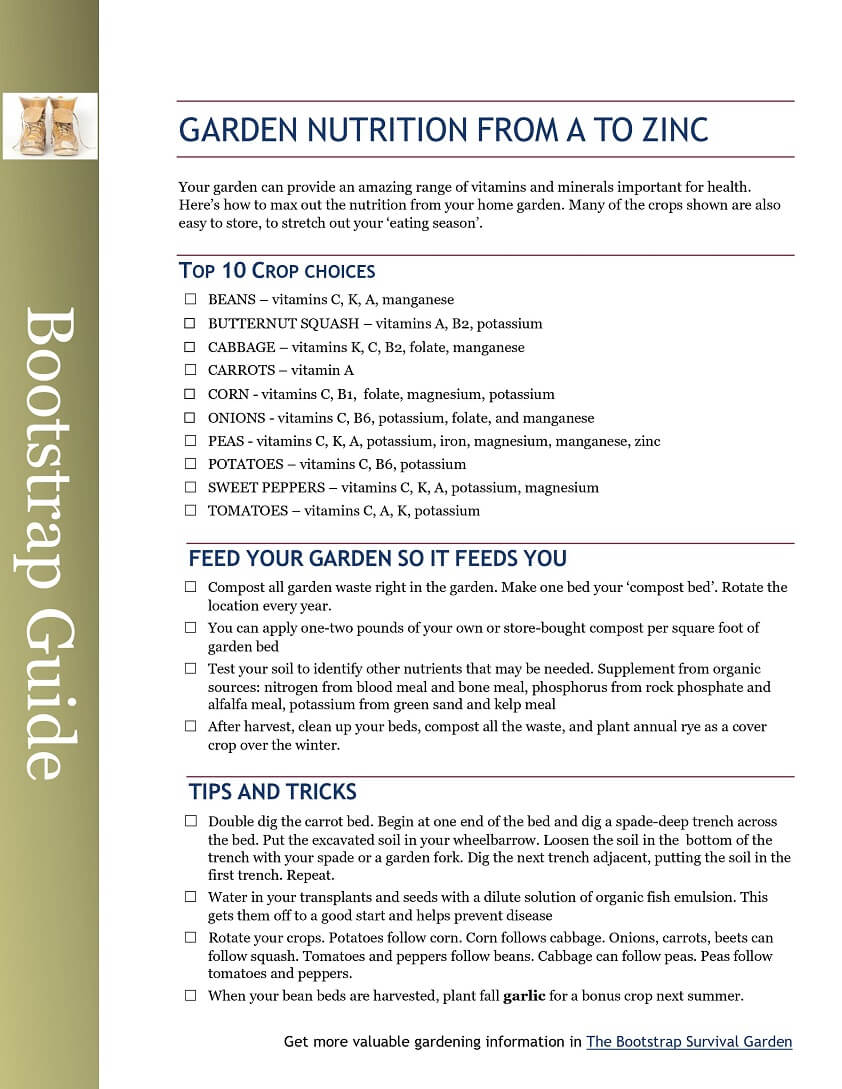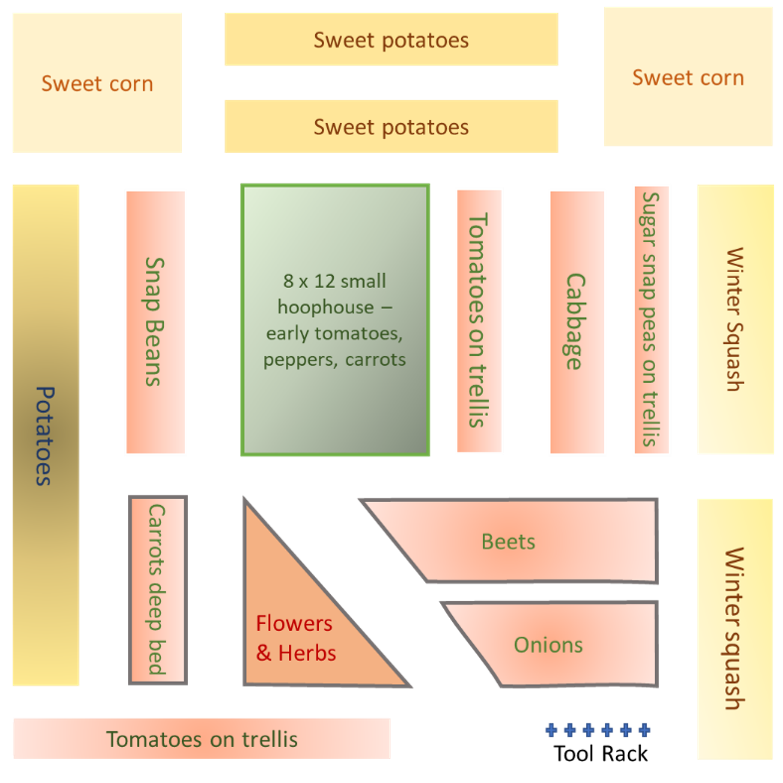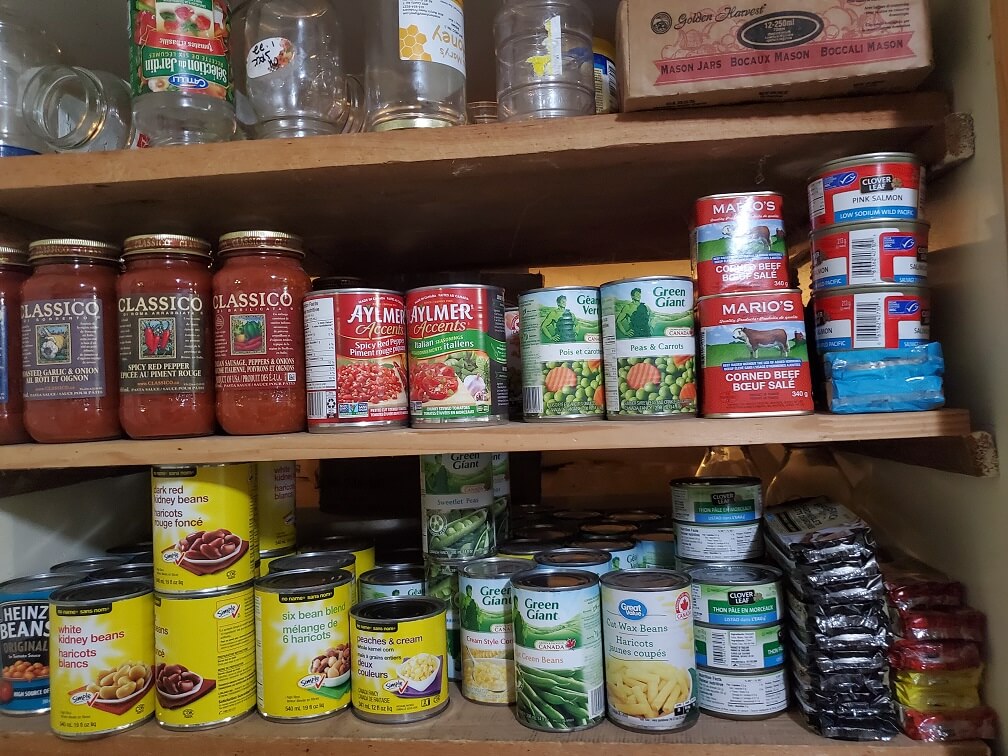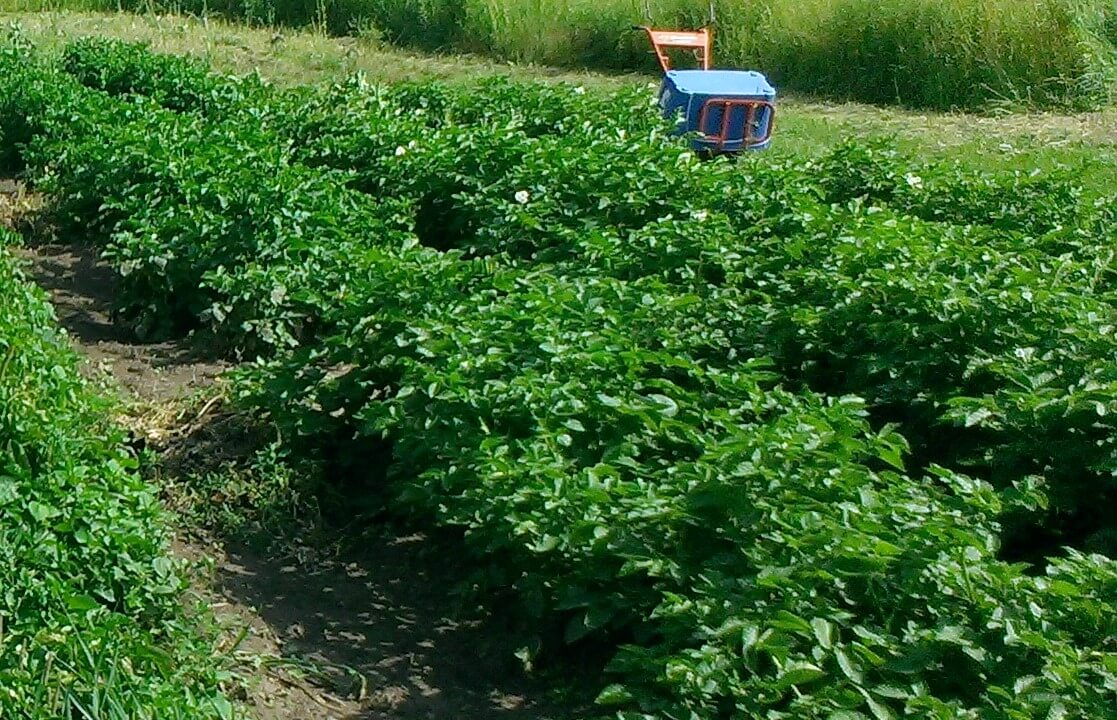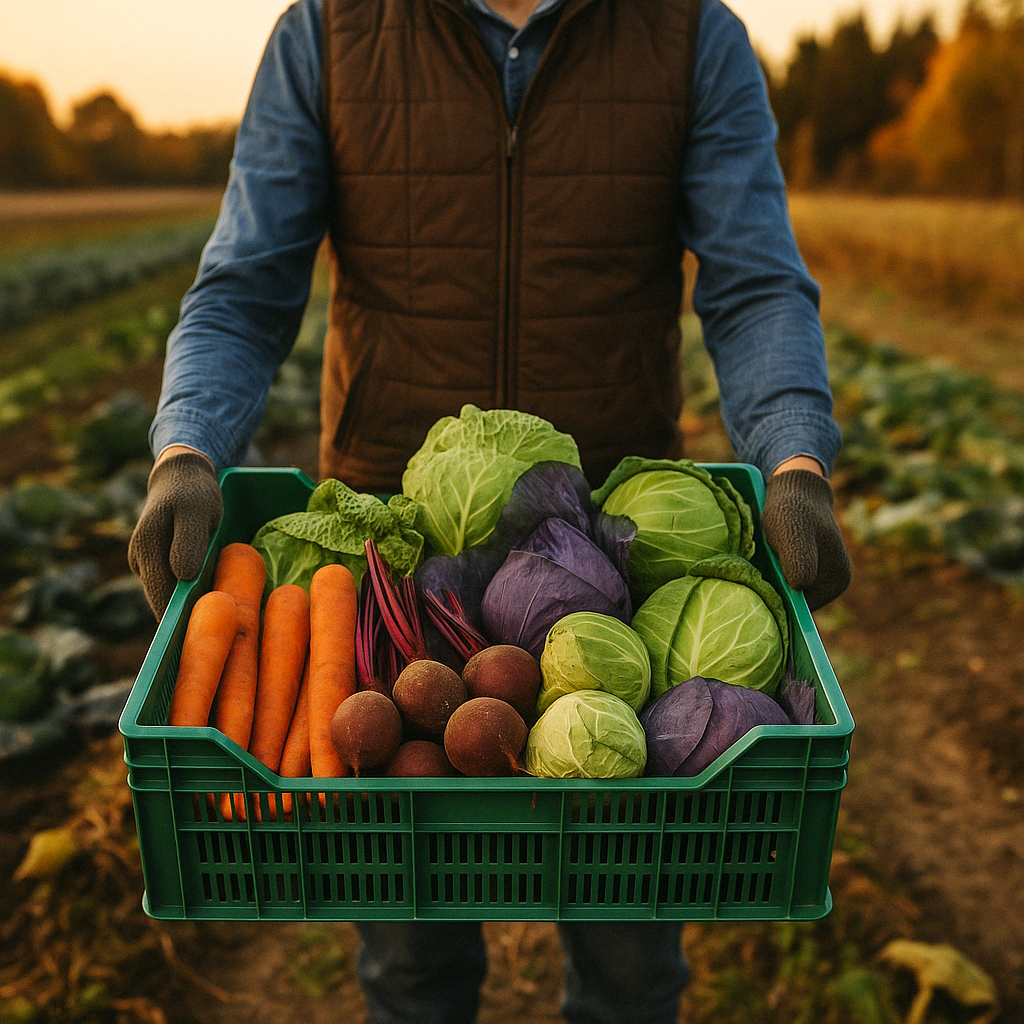A Nutrition Garden Model Anyone Can Grow
You might be asking what is a 'nutrition garden model'? It's a garden model employing crops choices and cultural practices intended to maximize the diversity of nutrients provided and contribute to family food security.
tl:dr use 'grow-how' to maximize the vitamin and mineral yields from your garden.
Nutrition Garden Model Cheat Sheet. Here's a handy one-page reference to let you make smarter crop choices for your family garden.
Featuring the top 10 choices to plant for easy-to-grow maximum nutrition crops and advice on establishing and maintaining your super-healthy garden.
This model packs a lot of nutrition into a relatively small space, get your copy and get ready for next season.
Right-click and use 'save as' to download your copy.
A Little Bit of Garden Nutrition Education
Why learn about this stuff? Simply this: if you are going to spend the time and money and energy to grow a garden, you might as well plan your work to get a lot more nutrition for the same investment.
If you are concerned about what's in your food, nutrition gardening is a simple way to ensure access to a variety of veggies that contain adequate amounts of essential nutrients, without any of the bad things. This garden model is easy to maintain using organic practices; no harmful chemicals required.
Your nutrition garden can be established on a small piece of land and provide healthy, delicious, pesticide-free vegetables for your family. In troubled times, this can be a real contribution to food security.
Crop Choices in the Nutrition Garden Model
The right crop choices are critical to planning a nutrition garden. The factors I consider when planning my market garden are not too different from the nutrition garden. When making crop choices I consider:
- nutrition profile,
- yield, and
- store-ability
For example, kale is a popular choice in many gardens, it's easy to grow and cold hardy. And it has some valuable nutrition components including vitamin A, vitamin C, vitamin K and potassium.
However, cabbage has a similar nutrition profile and will yield four or five times the amount of food in the same space. And cabbage can be stored in a cold room for a couple months, and is easily made into dishes that can be stored indefinitely, by fermenting or freezing.
A Prototype Nutrition Garden Model
My recommendations for a nutrition garden model that anyone can grow:
- Beans (snap or pole) – vitamins C, K, A, manganese
- Butternut squash – vitamins A, B2, potassium
- Cabbage– vitamins K, C, A, B2, folate, manganese
- Carrots– vitamin A
- Corn- vitamins C, B1, folate, magnesium, potassium
- Onions- vitamins C, B6, potassium, folate, and manganese
- Peas (edible pod types) - vitamins C, K, A, potassium, iron, magnesium, manganese, zinc
- Potatoes– vitamins C, B6, potassium
- Sweet peppers – vitamins C, K, A, potassium, magnesium
- Tomatoes– vitamins C, A, K, potassium
How much to grow?
Here's how much space I would allocate to each of these crops. First, to grow these 10 crops I would plan on setting up 20 garden beds. The reasons for this are:
- Some veggies will occupy more than one bed
- We want to allow for crop rotation
How big to make the beds depends on how much space you have to work with. 20 beds that are 3 feet wide and 8 feet long would fit into 500 square feet; allow another 100 square feet or so for paths.
I would allocate space like this:
- Beans – 1 bed
- Butternut squash – 3 beds
- Cabbage– 2 beds
- Carrots– 1 bed
- Corn- 3 beds
- Onions- 1 bed
- Peas - 2 beds
- Potatoes– 3 beds
- Sweet peppers –1 bed
- Tomatoes– 2 beds
If yo add that up, it totals 19 beds. I would allocate bed 20 to be my in-garden compost bed. Put all garden clippings and waste in bed 20 and let them 'cook' over the season. The next year, fork up that bed and plant it to a heavy-feeding crop like corn. Rotate the location of the bed each season.
Here's another option: Short rectangular beds are not the only way to lay out a garden. This was my actual 'experimental small garden' in 2020, set up to grow a LOT of nutrition in a small space (about 1200 sq. ft.) and allow for easy crop rotation.
The garden is made up of both framed and unframed raised beds. The unframed beds - potatoes, sweet potatoes, corn and squash can all rotate around the perimeter of the garden. Note the small hoop house right in the middle for some extra-early tomatoes and peppers
Speaking of rotation...
Crop rotation helps to maintain soil fertility and reduces the build-up of garden pests and diseases. I manage my big garden organically, and crop rotation is a big part of that. Year over year, I plan my garden so that I don't grow the same crop successively in the same bed. It's a good idea to follow that practice in our nutrition garden model.
Some suggestion for crop rotation in this prototype garden:
Potatoes follow corn. In other words, plant potatoes next year where your corn grew this year. Corn follows cabbage. Onions and carrots (or any root crop) can follow squash. Tomatoes and peppers follow beans. Cabbage can follow peas. Peas follow tomatoes and peppers.
Final thoughts about this nutrition garden model
If you can, prepare your garden site the year before you plan to grow vegetables. Note: if this is not practical, no worries. You can add well-composted (NOT fresh) manure or your own home-made compost as soon as the ground can be worked in the spring.
You can apply one or two pounds of compost per square foot of garden area. It's also a good idea to test your soil, and add amendments to make up for any deficiencies.
And temper your crop choices with your own personal preferences. There' no point in growing a super-nutrition crop that you (or your kids) won't eat. If you don't like squash, don't grow it; grow more potatoes, or swap in sweet potatoes. They are also a nutritional powerhouse.
If you want to learn a LOT more about maximum nutrition gardening, here's a great resource.
Free Market Garden Start-up Guide
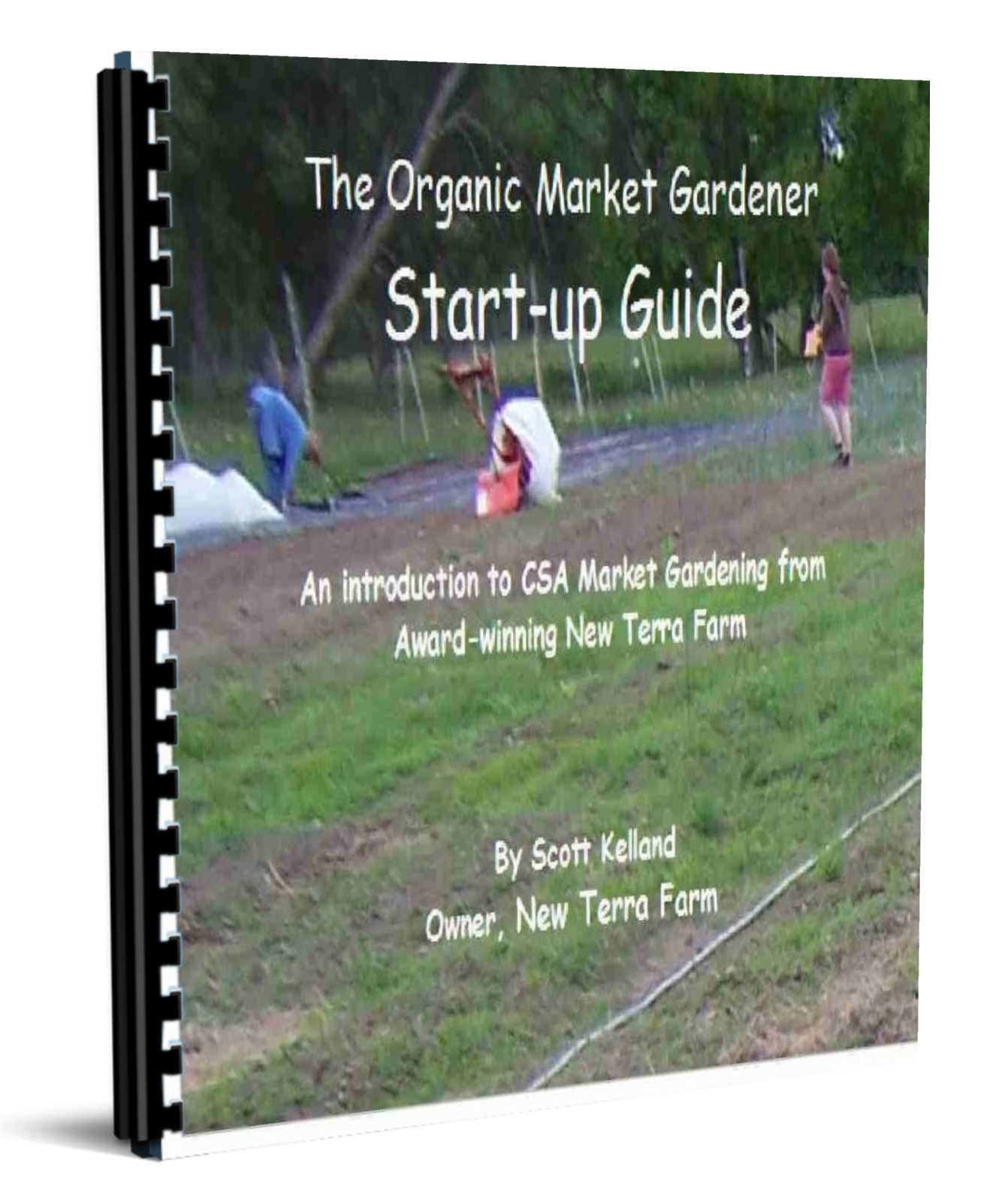
The consumer demand for fresh local organic food has never been higher. Bad news on the supply chain is good news for local growers.
Get my free Organic Market Gardener Start-up Guide and see if this is the right time to launch your CSA market garden business. Download it here.
You can download more free reports here, only from New Terra Farm
Recent Articles
-
A 52 week harvst to stretch and your income
Apr 16, 25 07:48 AM
A step by step approach to build a 52 week harvest plan for more yield and more income -
Backyard Garden Profits your key to a successful small market garden
Apr 06, 25 05:38 AM
I wrote Backyard Garden Profits for the small grower who wants to launch a successful side hustle gardening for money. Practical actionable advice small-scale growers who want to earn more, waste less… -
Homesteader Book Bundle only from New Terra Farm
Apr 01, 25 04:58 PM
If you have a hankerin' for country living, my best value Homesteader Book Bundle is a great resouirce.
